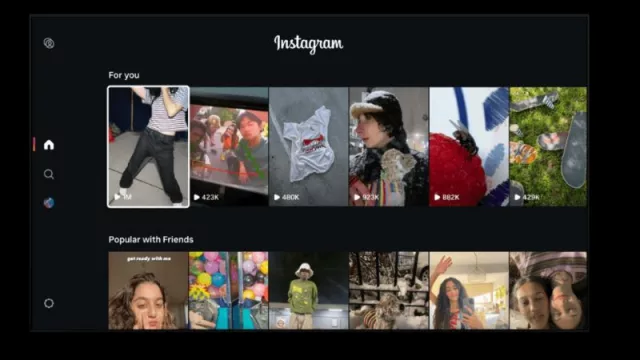"The root" of business excellence today lies in creating a culture, an organizational chart, and a work structure entirely focused on value generation and the development of strategy, discipline, and human competencies. Paradoxically, the root solution is neither quick nor a single tool, nor is it merely technical. It's not linear, and it's far from the traditional canons of power roles.
The big question is... Why don't universities, TikTok or Instagram videos, or the great learning gurus or consultants offer training on this?
The answer:
The root of all problems is not simple, not quick, requires multi-competencies, teams, and involves a massive foundation of strategic, constant planning and co-creation.
In our constant search for immediate solutions, we tend to focus on the superficial aspects of the challenges we face. However, the answer to many of these problems lies in the "root," in the very foundations of our organizations and our lives. To better understand this, let's explore how this dynamic relates to organizational structures and people's learning.
The big problem:
Contemporary society often underestimates the importance of addressing the essence of problems. Even though there are systems designed to accelerate the review and adjustment of aspects such as psychology, behavior, habits, and performance, these often focus on changing what we do rather than who we are. This leads to superficial changes that do not address the essence of being.
A tree metaphor, What if I told you that the answer lies in the root of everything?
Let's imagine a metaphor that illustrates this dynamic. Often, we strive to get high-quality fruits by taking care of the nutrition and growth of the outer part of the tree, but we forget to strengthen and develop its roots. Similarly, organizations and individuals require a discipline that harmonizes both the roots and the visible part. This goes beyond what we traditionally consider as success and management.
The problem in summary: we only work on superficial change
Frequently, we try to change the psychology, behavior, habits, and results of individuals and organizations through methods and techniques that focus on changing what they do rather than who they are. While this may achieve some changes, it is insufficient when there is already an entity developed "above" those roots. We need a deeper and more comprehensive discipline.
The solution so far: deepening the roots...
The solution to this problem often takes the form of a "retreat" or a self-assessment period that allows us to modify the roots, the "being" of an entity. However, this solution poses three challenges: the impossibility of stopping for long periods, the need to integrate change into real life, and the inadequacy of fragmented approaches.
The cycle of dissatisfaction has led to new roles and new organizational charts; today's change goes deeper than it seems.
This cycle of dissatisfaction is common in the business and personal world. Many people seek quick solutions due to a lack of time or budget for learning and growth. However, it is essential to question these beliefs and seek a deeper transformation.
The ultimate solution, creating new organizational charts and a new organizational form, even goals, metrics, and purposes must be reviewed, not just roles.
We have discovered that there are individuals and organizations that maintain a structural discipline - formalized - that drives fulfillment over time. Successive experiences have shown that traditional power structures within institutions, organizations, and companies destroy true solutions by their own threat. That is, a CEO or CFO will not add value to what needs value today because it would take away their power.
The solution: The new organization
Today's successful organizations are based on a structure and a radically different dynamic from traditional conventions. In recent years, a new crucial role has emerged: the "Head of Culture." This leader of corporate culture directly influences strategic planning and becomes the central axis of the corporation.
The power of the "Head of Culture" (Chief of Culture).
The "Head of Culture" has emerged as a figure equally important as the CEO. They lead, schedule, and allocate resources daily, in addition to playing a fundamental role in creating an organizational culture coherent with the current times.
Innovative roles emerge
This figure leads the creation of an innovative organizational structure that includes roles such as Corporate Planning Manager, Head of Comprehensive Communication, Leader of Innovation and Development, and many more. This new structure is based on deepening the roots of organizations and individuals.
The Head of culture now has POWER; they are practically a CO-CEO. Here are the roles that begin to depend on them.
Cornerstone of the "Head of Culture." Innovative roles emerge from them, and a new organizational chart.
Corporate Planning Management:
• Head of Comprehensive Business Line Planning.
• Head of Brand Planning
o Product Planning Leader
Value Creation Management
• Head of Comprehensive Communication (internal and external)
• Head of Strategic Marketing (10, 5, and 3 years)
• Head of Immediate Experience Marketing (multichannel)
• Deputy Head of On-Off Physicality
• Deputy Head of Cross Media
• Deputy Head of Institutional Relations
• Head of Innovation and Development
• Head of Quality
• Deputy Head of Comprehensive Order and Good Practices
• Head of Co-Creation (external) and Cross-Business
Culture and Human Resources Management
• Head of Talent Development
• Deputy Head of Technology and AI Application
• Deputy Head of Human Competency Training
Leader of Conversational Competencies
• Deputy Head of Time and Agenda Management
• Deputy Head of Discipline, Character, and Sense of Value
Leader Coach of Personal Leadership and Multiple Intelligences
• Head of Co-Creation (internal)
• Deputy Head of Learning and Agile Methodologies
• Head of Qualitative-Quantitative Indicator Measurement
• Deputy Head of Objective and CC Indicator Monitoring
• Deputy Head of Actionable Budgets
Oversizing or rationalization?
This structure represents a rationalization of what is really important today, and, above all, what is absolutely necessary. It constantly works on the root of all problems and becomes the most efficient and effective logic for creating excellence.
The ideal profile for a HEAD of Culture
The degree of difficulty lies in the fact that they must be profiles with a lot of experience, typically over 45 years old, and they must have the ability to handle both technical and soft skills in a synchronized manner. They are great communicators and strategists, they love culture obviously, and the design of processes. They are natural leaders, creative, holistic, disruptive, and they love challenges. They are very human, empathetic, and they require great listening and co-creation skills. They are profiles with a great work capacity, with a certain identification with values and respect but with high demands on their teams and the organizations where they work. They are definitely not conservatives, possess great courage, and their cause is often to break the status quo. They love co-creation, diversity, and require loyalty, common sense, sustainability, constant investment, patience, sensitivity, and broad judgment.
A transformative paradigm
Until now, we have been taught that an efficient organization focuses on aspects such as sales, accounting management (based on an old stock paradigm), and profitability. Today, although these aspects remain important, they are no longer sufficient and have undergone a redefinition in scope and power. Companies and organizations have measured performance with metrics that show the tip of the iceberg, counting the fruits of the tree but not addressing the root of the problems. "The time to develop roots is different from the seasonality of flowering or fruiting."
The new CEO in a team has to co-create and co-lead with the HEAD OF CULTURE.
The traditional CEO was based on a utopian vision of success, but this vision no longer fits the current reality. Hard metrics are key, but they never attack the root of creating a virtuous cycle. For centuries, they have been evaluated as the most important, but they are no longer. Today, it is vital to create a new way to measure what is most important. What is called qualitative, soft skills, the old Overall Quality, reputation, satisfaction, talent level, and many vital indicators that, by working on them over time, will yield better profitability, sales, share, etc. The CEO needs to work as a team with the "Head of Culture" to lead the necessary transformation in today's business, social, and competitive environment.
The current environment
Current workers, customers, and markets demand an organizational culture and discipline consistent with the times we live in. Technology and innovative companies have led this change, achieving customer and team loyalty. Internal structure alone is not enough, nor have new technical roles for managing companies and teams or current communication been sufficient.
Implementation
The implementation of this new structure takes time and must be carried out through a process of strategic planning followed by stages of formation and adjustments. Organizations that adopt this new structure are laying the groundwork for long-term success.
The future is in your hands
In summary, the root of all problems lies in our organizational culture and personal discipline. Adopting a structure that deepens our roots and cultivates awareness of inner and outer development has become an imperative need for fulfillment and success in today's world. The "Head of Culture" emerges as a fundamental figure in this transformation.
Are you ready to lead this change in your life or your organization?
Here we share reports on which companies have already implemented the HEAD of Culture and what profile a HEAD of Culture should have.












Tu opinión enriquece este artículo: